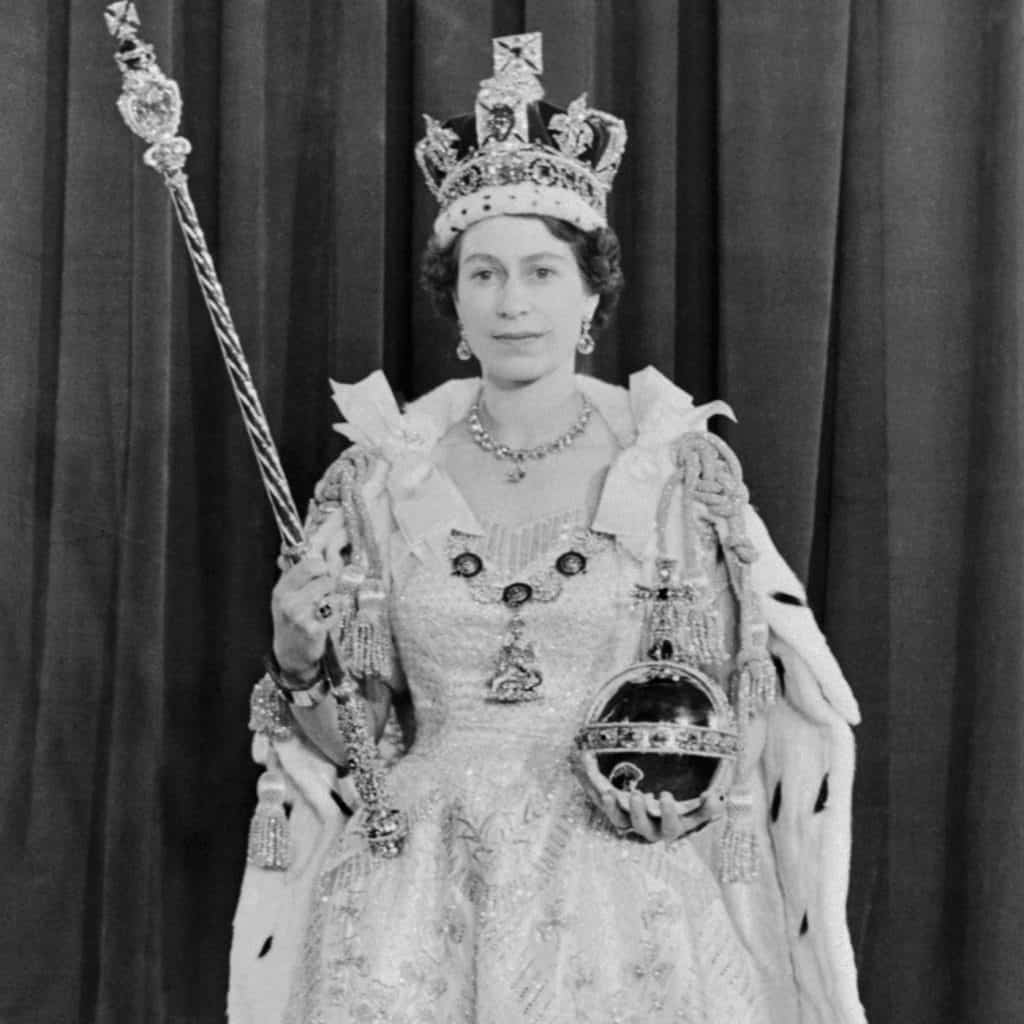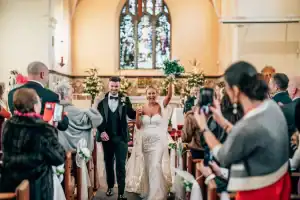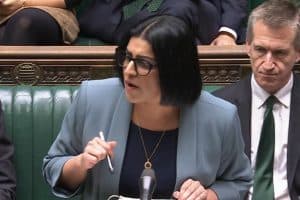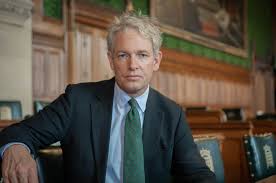The Queen always spends 6 February quietly and almost always on her Sandringham estate in Norfolk. She will do so again this year. Many may think this is a time of celebration, the date she acceded to the throne; but for her it matters more as the anniversary of her father’s death.
Accession Day this year is one for the history books: never before has a monarch reigned in Britain for 70 years. The seven decades of her reign have seen change and often turmoil. The Queen, in contrast, has been a beacon of stability and constancy, not least in her Christian faith.
And while the monarchy has been the go-to institution for a sense of permanence, the Church of England, of which she is head, has not. The ancient village church has a nostalgic hold on many a heart, and cathedrals attract plenty of tourists and are decently filled with worshippers. But statistics show that the Church of England is in sharp decline. The British population has grown more secular and more religiously diverse through the Queen’s reign.
Yet Elizabeth II’s role remains shaped by Anglicanism, particularly her roles as defender of the faith and as supreme governor of the Church of England. That title is down to her namesake, Elizabeth I. After the break with the Roman Catholic Church caused by the divorce of her parents, Henry VIII and Anne Boleyn, Henry put himself in charge of the church with the 1534 Act of Supremacy, declaring himself supreme head of the Church of England. The first Elizabeth amended the title to supreme governor in 1559.
Since then, all monarchs have called themselves supreme governor, as well as retained the title of fidei defensor, defender of the faith, given to Henry VIII before the Reformation by the Roman Catholic Church.
But not all monarchs have taken religion as seriously as Elizabeth II. Because so few of us remember a time before the Second Elizabethan Age, few realise what a particularly religious queen we have. We think it the norm. But this queen takes her faith especially seriously. She made this plain in 2016 when she wrote in the foreword to the Bible Society’s booklet The Servant Queen and the King She Serves to mark her 90th birthday: “I have — and remain — very grateful to you for your prayers and to God for His steadfast love. I have indeed seen His faithfulness.”
While its supreme governor’s faith has stayed steady, the Church of England has faced a crisis of affiliation. There are not the people in the pews there once were (although it boosted its popularity during lockdowns with its online offerings), with 3.5 per cent of the English population attending Sunday services in the late 1960s, falling to 1 per cent by 2019.
Its established status remains. It maintains it is the church for everyone in the country; it will bury you, regardless of your religion, and welcome you to its altars. Its official stature remains the same. It has 26 bishops — the lords spiritual — in the House of Lords. The Archbishop of Canterbury is the highest person in precedence after the royal family at state occasions, such as banquets for visiting heads of state. And it crowns the monarch.
This intertwining of the monarch and religion, and in particular the Church of England, is most evident at a coronation but begins from the moment of accession. The announcement of the start of Elizabeth II’s reign came the same day her father, George VI, died when the lords spiritual and temporal and the Privy Council proclaimed that after “it hath pleased Almighty God to call to his mercy our late sovereign lord King George VI”, and that his 25-year-old daughter Princess Elizabeth became Elizabeth II as “Queen of this realm” and defender of the faith.
The Queen’s own statement on her accession came two days later, after her return from Kenya where she had been on tour when her father died. Her declaration to the first Privy Council of her reign was, as it always is for monarchs, deeply personal and she told them: “I pray God will help me discharge worthily the heavy task that has been laid upon me so early in my life.”
There was then, according to tradition, a pledge to preserve the “true settlement of the Protestant religion and Presbyterian government” of Scotland, although given she is not head of that church is not something she can enforce.
Then, at the first parliament of her reign came her accession oath: “I do solemnly and sincerely in the presence of God profess, testify and declare that I am a faithful Protestant” and that she would uphold and maintain that faith — a form of words that did not include the previous damnings of the liturgy of the Roman Catholic Church as “superstitious and idolatrous”, included in accession oaths of Britain’s Protestant monarchs.
It was the coronation oath that made the Queen’s link with the Church of England most overt when she was asked: “Will you maintain and preserve inviolably the settlement of the Church of England, and the doctrine, worship, discipline and government thereof, as by law established in England? And will you preserve unto the bishops and clergy of England and to the churches there committed to their charge, all such rights and privileges, as by law do or shall appertain to them or any of them?” To which she answered: “All this I promise to do.”
The bond between monarch, church and the nation has been reinforced on hundreds if not thousands of occasions during the Queen’s reign by her attendance at formal church services: thanksgivings and memorials, Maundy services around the country, services at the Cenotaph on Remembrance Sunday, and appearances at Christmas and Easter. Archbishops, bishops, cathedral deans, vicars, rectors and chaplains have all been photographed alongside her on countless occasions. Prayers are said for her regularly at Church of England services.
Then there is the work that goes on as part of her role as supreme governor, particularly formally appointing bishops, on the advice of the prime minister. This role of supreme governor has also been expressed more overtly since 1970 due to reforms made 50 years ago in the Church of England with the creation of the General Synod. Since then, she has inaugurated and addressed the opening session every five years after diocesan elections, until last year when she was unwell and sent Prince Edward to represent her.
The Queen’s presence at synod, with its three houses of bishops, clergy and laity, is a reminder that in the Church of England, laity play a key role: after all, the sovereign, while a particular individual, is a lay person, not a cleric and she as supreme governor is a layperson at the apex of the church.
Simon Sarmiento, who runs the Thinking Anglicans website which has long been a centre of discourse for members of the Church of England, says: “In my opinion, it’s a very good thing that she is not a cleric. It makes a difference.
“People of all stripes in the Church of England have a high regard for the Queen. She embodies the still small voice of calm.”
According to Fr Marcus Walker, rector of Great St Bartholomew’s, in London, and an Anglican commentator, the fact that those “people of all stripes” stay together in the Church of England has much to do with the role of the sovereign as supreme governor.
“Anglicans in the Church of England stumbled into tolerance, with the aim of having as many people as possible as members of the church,” he says. “The sovereign is fundamental to the identity of the national church as the binding force. Evangelical, Catholics, Prayer Book Anglicans — what they all have in common is the role of the Queen. The Queen is the Church of England’s unifying figure.”
In recent years, the Queen has spoken of the importance of the Church of England working with other Christian denominations and different faiths being reconciled, suggesting that her own role as a religious leader has altered in the 21st century. “St Paul reminded us that all Christians are entrusted with the ministry of reconciliation,” was her message to the 11th General Synod in 2021, read by Prince Edward.
“I pray God will help me discharge worthily the heavy task that has been laid upon me so early in my life.”
– Accession statement of Elizabeth II
In 2012, she made a highly significant speech about the Church of England at an event in Lambeth Palace, hosted by Rowan Williams, then Archbishop of Canterbury, and attended by leaders of many faiths. While she had promised in 1953 to uphold the Protestant religion, she appeared to see this not as a defensive or even aggressive stand but as a position that allowed co-operation and appreciation of others.
The supreme governor told the Lambeth Palace guests: “The concept of our established church is occasionally misunderstood and, I believe, commonly under appreciated. Its role is not to defend Anglicanism to the exclusion of other religions. Instead, the church has a duty to protect the free practice of all faiths in this country.”
The Queen’s position as a religious head of state has been criticised by secular organisations, including the National Secular Society. Its president, Keith Porteous Wood, says: “The position of the head of state should not be reserved for members of one particular faith. The British monarch’s coronation reinforces the privileged position of the Church of England and risks alienating the non-Christian and non-religious majority.”
Nor is the National Secular Society keen on the Queen’s articulation of her own personal faith in her Christmas messages: “The Queen is very much more religious than most of the country and the religious content of her Christmas messages miss an opportunity to be more inclusive.”
But members of other faiths tend to approve of them. Reform Rabbi Jonathan Romain says that Jewish people and those of many faiths and none, will listen attentively “because she is our Queen, as much as anybody else’s. It is still a powerful message because she is a unifying force”.
According to Fr Walker, the Queen’s personal faith is as important as her role as supreme governor. As well as her Christmas messages of recent years, her Easter message during the Covid-19 lockdown was of immense significance, he says. It was a first for the Queen but in the midst of the first lockdown, on the eve of Easter, as so many people were enduring illness and bereavement, she felt the need to speak out, commenting on how candles were used by Christians at Easter, as in many other religions, as a metaphor for overcoming troubles and for hope. The candles, she said, were, “a way of showing how the good news of Christ’s resurrection has been passed on from the first Easter by every generation until now”.
She added: “This year, Easter will be different for many of us, but by keeping apart we keep others safe. But Easter isn’t cancelled; indeed, we need Easter as much as ever. The discovery of the risen Christ on the first Easter Day gave his followers new hope and fresh purpose, and we can all take heart from this.
“We know that the Coronavirus will not overcome us. As dark as death can be — particularly for those suffering with grief — light and life are greater. May the living flame of the Easter hope be a steady guide as we face the future.”
Walker noted how “there had been this trend for people to light candles in windows at the time, a secular thing, and some bishops joined in but they didn’t have anything to say that was particularly about faith. But the person who spoke about faith — at a time when churches were shut, when you couldn’t go to an Easter service — was the Queen.
“She has become a rare voice. The Queen’s witness is increasingly countercultural.”
Defenders of the Faith, by Catherine Pepinster, about the monarchy and religion, will be published by Hodder Faith this year


















